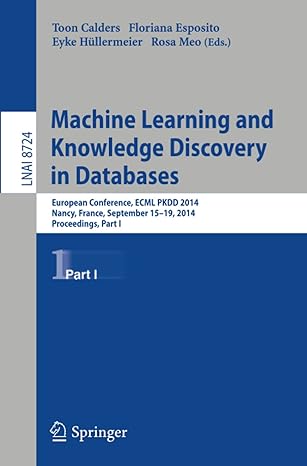Question
Consider the following schedule S, which is generated by some concurrency control protocol for executing two transactions T1 and T2: S = T1:W(X), T2:R(Y), T1:R(Y),
Consider the following schedule S, which is generated by some concurrency control protocol for executing two transactions T1 and T2:
S = T1:W(X), T2:R(Y), T1:R(Y), T2:R(X), T1:Commit, T2:Commit
For each of the following concurrency control protocols, you must:
A. State if the protocol allows schedule S. That is, allows the actions to occur in exactly the order shown in schedule S.
B. Explain the reason why schedule S is allowed or not allowed under that protocol.
1) under the Basic 2PL protocol
2) under the Strict 2PL protocol
3) under the Conservative 2PL protocol
Step by Step Solution
There are 3 Steps involved in it
Step: 1

Get Instant Access to Expert-Tailored Solutions
See step-by-step solutions with expert insights and AI powered tools for academic success
Step: 2

Step: 3

Ace Your Homework with AI
Get the answers you need in no time with our AI-driven, step-by-step assistance
Get Started


